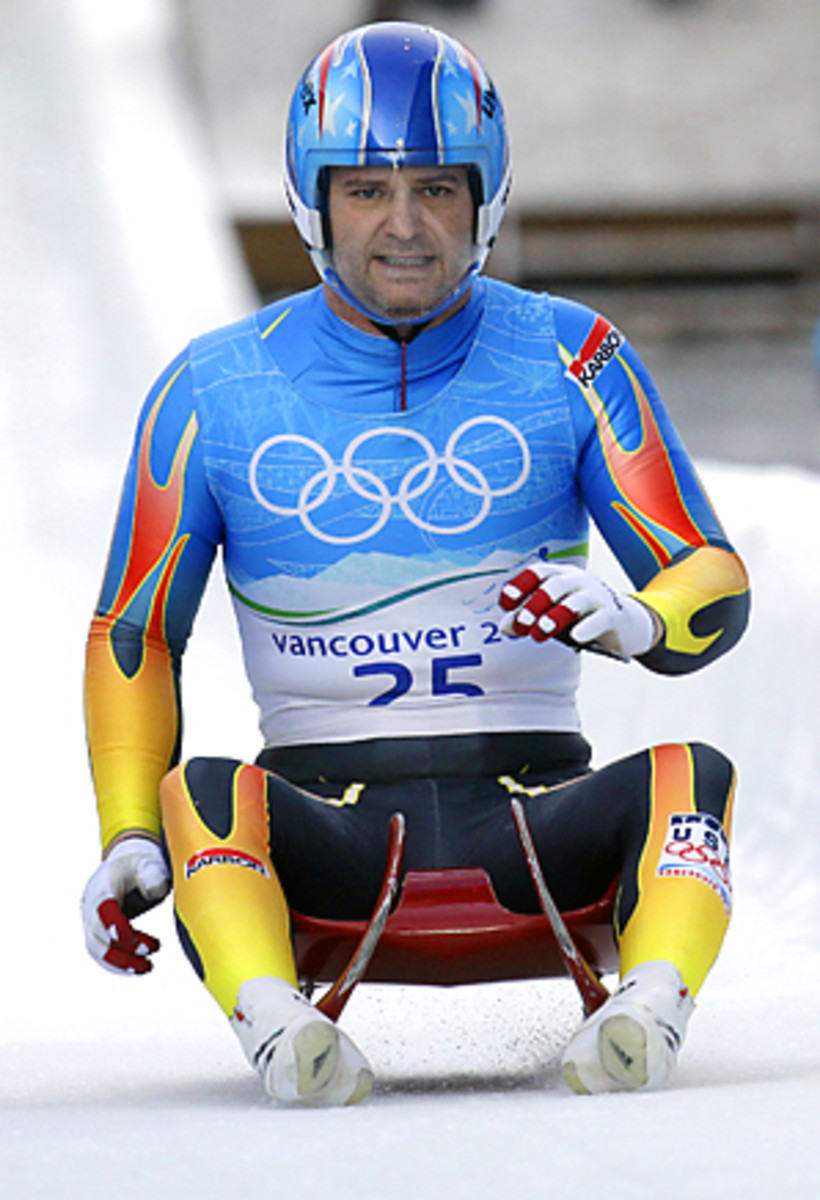
Post-tragedy course changes bring more controversy to luge events
Though Kumaritashvili's death did not stop the luge competition, it did bring drastic changes to it. Curve 16 -- the final curve of the course, the so-called Thunderbird curve, where Kumaritashvili was killed -- now features a wooden retaining wall, and the ice has been shaved to make the chute more rectangular, keeping riders from sliding up the side.
The Vancouver Olympic Organizing Committee (VANOC) and the International Luge Federation (FIL) also decided to start the men from the women's start, which is three curves lower and skips the steep drops at the top of the course. "We're only going about [5 mph] slower by the finish," said U.S. luger Tony Benshoof, "but we're going like [30 mph] slower up top."
Benshoof, like most other riders, trained for the traditional men's start and would have preferred to go from the top. Benshoof, who took fourth at the 2006 Games in Turin, has been plagued by back problems. He said the women's start is less steep than the men's, requiring a harder push and putting more stress on his back. "My starts were really slow," said Benshoof, who was in seventh after two runs. The lugers generally agreed the start change would favor the Germans because of their strong pushes. Germans were in first, second and fifth going into Sunday's final two runs, and German luger Andi Langenhan (currently 5th) agreed the new start favors his countrymen. "It is an advantage for us because we're strong at the start, and now it's harder to build speed up top," he said.
Lugers are still getting up around 90 mph at the bottom of the course, and U.S. slider Bengt Walden went so high on the beginning of Curve 16 that he bumped the protective pads on the top of the curve. "I felt really relaxed," Walden said, "I was really surprised I roofed it." Swiss luger Stefan Hoehener had the only crash of the day when his sled went sideways with only a few curves to go. In a slick display of disaster management, Hoehener held onto the sled as he careened down the course. He was able to maneuver back onto it just before the finish, which he crossed with a thumbs-up, letting everyone know he was unhurt.
There was one conspicuous absence at the course on Saturday: Levan Gureshidze, the remaining Georgian luger, who has decided to drop out of the Games. Luger Shiva Keshavan of India said that Gureshidze spent the day talking to friends and family back home.
On Saturday morning, Keshavan had said the pre-race training runs "felt different. We usually slide and enjoy ourselves, and today you didn't have that joy. At the same time, we are professional athletes, and we have a duty to perform." This sentiment was echoed by athlete after athlete on Saturday. Canadian luger Ian Cockerline, currently in 21st place, got choked up early in the day thinking of Kumaritashvili, but said that he still had to focus on the race. "I want people to see this sport in all its glory," he said. He also conceded that moving the start diluted the advantage that Canadians had received from extra practice on their home course. "I worked really hard and closed the gap [with the top lugers in the world]," he said, "but I'm not the strongest starter, and now the top is flat, so that really hurts me."
Canadian luge team coach Wolfgang Staudinger was unhappy with the move of the start, too. "Personally, I don't think [it's the right decision]," he said. "Our guys are ready to go from the top, and I just spoke to the German team and they're ready to go from the top. I think all athletes that compete here were ready to go from the top, but we have to accept the decision."
Svein Romstad, the FIL secretary general, said Saturday morning the start change was an attempt to deal with the "emotional aspect" of the tragedy. "We have not experienced this in 35 years. We are unfamiliar with how to deal with this."
The fact that Canadians got extra practice on the course was a point of heated contention even before Kumaritashvili's death, and it only intensified after the accident. Canadian athletes got 250 or more runs in Whistler, while athletes from other countries only got around 40. Such a home-course advantage is customary in the sliding world, but the sheer speed of the Whistler course -- lugers have reached speeds in the high 90s, over 10 mph faster than any other course in the world -- had athletes and coaches questioning the decision to limit access. On Saturday, VANOC officials said the track was opened for extra training in January to all sliders who were lower than 30th in World Cup rankings. Kumaritashvili does not appear to have visited during the extra training period, however.
Canada invested $117 million in its Own the Podium initiative to attempt to top the medal count, and the program's CEO, Roger Jackson, said before the Games that he didn't mind the grumbling from other countries about course access. "I'm glad there's a little nervousness," he said. "That's exactly what we want." Cockerline added that complaints about access are the norm, and that maybe more training time should be granted, but "if we'd given everybody more runs, that's trouble, too. We might win less medals and there was a lot of money invested in that."
Debate about limiting access to courses will continue after the Games, but on Saturday, attention was focused on Curve 16. There, beneath falling snow, was a small bouquet of yellow daffodils and a picture of the Northern Lights on which someone had written: "Just like gold, your dream will last forever!"




